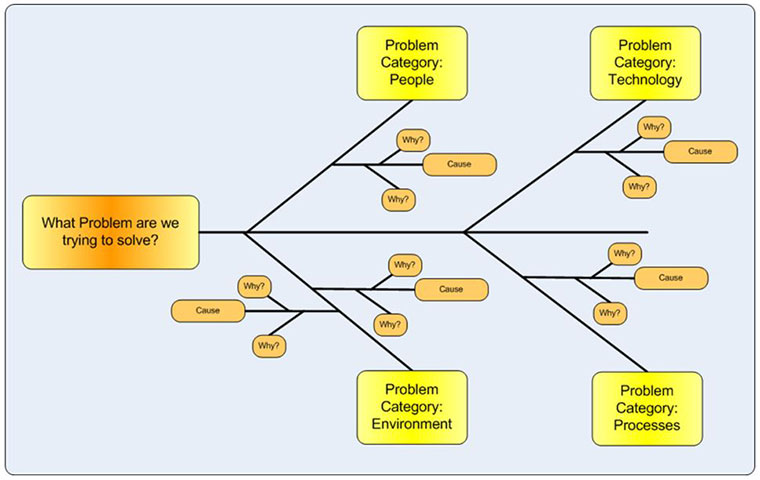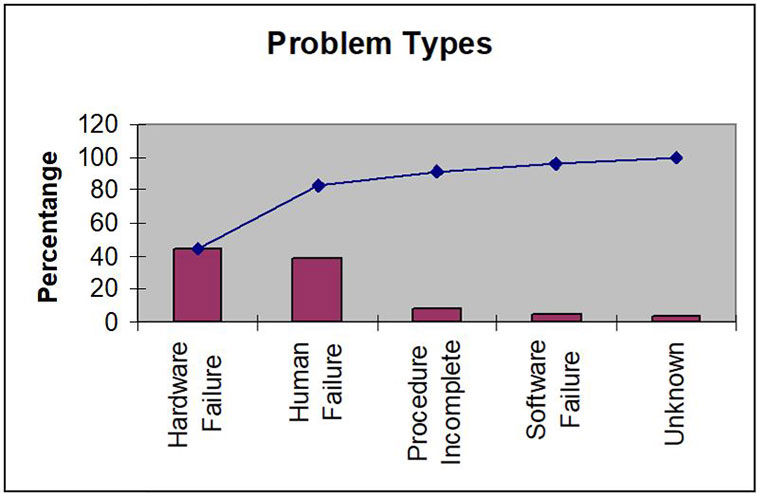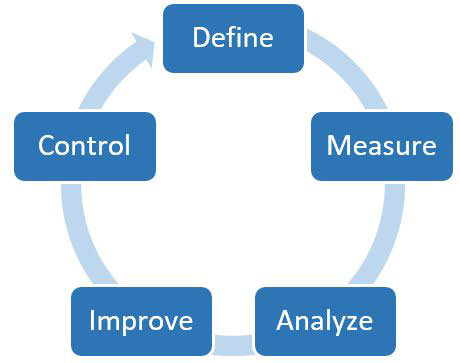Date Published July 1, 2020 - Last Updated December 10, 2020
In the first article of this series, Problem Management Defined, I discussed the basics of problem management. I also shared my view of the difference between reactive and proactive problem management. Here, I will explore why problem management is so important and present some selected problem analysis techniques.
The Importance of Problem Management
A “problem” represents an opportunity. Make no mistake, problems are…well, problems. Problems disrupt organizations and people from doing their work. Problems result in unplanned work, frustration, and unbudgeted costs.
Problems result in unplanned work, frustration, and unbudgeted costs.

So, what is the opportunity?
A problem provides an opportunity for learning new skills and knowledge and growing organizational capability and confidence. A problem is an opportunity to identify and implement improvements. Resolved problems result in cost savings, or in the case of proactive problem management, cost avoidance. Resolved problems result in better work quality, better results, and better employee experience (EX) and customer experience (CX).
The Symbiotic Nature of Problem Management
For all the good things that effective problem management enables and delivers, it cannot do these things by itself. Problem management is enabled and enhanced by other service management practices, just as other service management practices are enabled and enhanced by the problem management practice—a true symbiotic relationship.
Incident Management. Incident management is the most closely associated practice with Problem Management. As I discussed in the first article, it starts with a clear definition of the criteria of a problem. Having said that, it’s the categorization and prioritization schemes that the two practices share that helps problem management be effective.
Change Enablement. While problem management identifies causes of incidents and analyzes errors, it’s the change enablement (formerly known as change management) practice that evaluates the proposed solution and manages implementation. The change enablement practice balances the proposed fix with other work going on within the organization, as well as communicates the status of changes.
Configuration Management. The configuration management practice manages configuration management databases (CMDBs). Problem management can use a CMDB to understand the relationships between configuration items. Often the initial indicator of a problem is a symptom and not the true cause. In other words, it may be a related CI indicating an issue (for example, application is down), but the cause of the application being down is that a file system is full.
Knowledge Management. High use/reference of a specific knowledge article may be indicative of a problem. The Known Error Database (KEDB) produced and maintained by problem management is often managed as part of a knowledge base.
Risk Management. Problem management must understand the organization’s view of and appetite for risk to effectively manage errors and problems.
IT Financial Management. Budget, affordability of the proposed solution to some problems may not be feasible because the organization cannot afford it.
Problem Management Techniques
There are a myriad of problem management and causal analysis techniques. Each technique has its own purpose as well as strengths and weaknesses. Depending on the situation, you might use several techniques or combinations of different techniques.
Brainstorming. Brainstorming can be a good way to capture individual perspectives about a problem. Effective brainstorming is quite simple. Get a group of people in a room and begin a timeboxed discussion regarding thoughts and ideas about the problem to be solved. The key to effective brainstorming is that ideas are not discussed, questioned (other than to ensure understanding), or analyzed during the brainstorming session.
5 Whys. The 5 Whys technique is one of the most popular and simple causal analysis techniques. Effective use of the technique encourages the problem solvers to avoid assumptions.
- Define the problem.
- Ask “why?” (generally, five times, but could be more or less) to get to a root cause.
- When the answer to a “why” suggests a broken process or alterable action or behavior, the cause may have been identified. A potential solution may now be definable.
Causal Chains. There is rarely a single event or single root cause; instead, it is more often the case that there was a sequence of events that led to a problem. A causal chain depicts the series of events that connected and followed each other in succession, with each event itself involving or constituting a cause. To say it differently, A causes B causes C causes D.
While constructing a causal chain, be careful not to make assumptions. Any cause within the causal chain must be supported by observation and empirical data, rather than just theory.
Ishikawa Diagram. Commonly known as a “fishbone diagram,” an Ishikawa Diagram is used to identify relationships among various variables. It is useful for categorizing responses from a brainstorming session.
- Using a whiteboard or flipchart, draw an Ishikawa diagram.
- Define the problem to be solved. Write the problem in the fish head.
- Write cause categories at the tips of the fish bones.
- As a brainstorming activity, write possible causes of the problem from the perspective of the cause category.
- Upon completion of the brainstorming activity, review and interpret the diagram, based on experience and available data.

Pareto Analysis. A Pareto analysis is used to separate the significant from trivial issues when dealing with larger volumes of data. It is used to identify where to focus analysis efforts. An effective method for visualization, a Pareto analysis is popularly referred to as the “80/20” rule—80 % of the problems are because of 20% of the issues.
- List causes or symptoms, along with the occurrence frequency, in a table
- Once completed for the data set, arrange rows in descending order of frequency
- Add a cumulative percentage column
- Create a bar chart, listing causes or symptoms in order of percentage of the overall total
- Superimpose a line graph of the cumulative percentages
- Draw a line at 80% on the y-axis, parallel to the x-axis
- Draw a line to the x-axis from the 80% point parallel to the y-axis
- Focus resolution resources and efforts on those causes or symptoms contained within the resulting “box”

DMAIC. The Define-Measure-Analyze-Improve-Control (DMAIC) method is a preferred method of problem solving within Lean. The five steps within DMAIC are:
-
Define. What is the problem? Why is it a problem?
-
Measure. What data do we need to understand the problem and how can this data be collected?
-
Analyze. Conduct an analysis of the data, using techniques like 5 Whys, Cause and Effect Matrix, or others.
-
Improve. Determine how the problem can be solved and define what the future state looks like.
-
Control. Embed the solution within the organization.

An Improvement Opportunity
Another way to conduct problem analysis is to treat the problem as an improvement initiative. Using an improvement model can be useful here.
PDCA (Plan-Do-Check-Act).
PDCA, also known as the Deming Cycle, is a simple, yet powerful way to identify and implement improvements. PDCA is an iterative, four-step model used for continual improvement, and is based on the scientific method. As a problem-solving methodology, cycles of PDCA are repeated until the problem is solved.
Improvement Kata. The improvement kata is a method for moving from a current state to a new state in a directed, creative, and meaningful way. The four steps of the improvement kata are:
-
Understand the vision or direction. What defines success?
-
Grasp the current condition. What is happening today?
-
Define the next target condition. What is the next step toward the ultimate goal?
-
Iterate toward the target condition. This step reveals the obstacles that need to be worked on to achieve the next target condition.
The power of the improvement kata comes from the discovery and learning that occurs working toward achieving the target condition. In my opinion, this makes the improvement kata a powerful problem-solving methodology because it requires that the user follow the data (evidence) and not jump to conclusions or assumptions.
Top 5 Keys to Successful Problem Management
This article presented several problem analysis techniques. In the investigation of a problem, you may find yourself using multiple techniques as part of your analysis. Here are five top keys for realizing success with problem management:
- Do not assume or jump to conclusions. Go where the data and facts lead you during your analysis.
- You can only fix what you can control. Some errors and causes are beyond your organization’s control.
- “Cordon off the area and capture the evidence.” Collect as much information as possible—system logs, network monitoring logs, consumer interviews, and other relevant data—before beginning problem analysis.
- All ideas have merit. Having as many differing perspectives as possible at the beginning of problem analysis helps avoid “groupthink” and jumping to conclusions.
- Start now. Problem management is one of the most valuable practices to adopt within an organization.
Successful problem management is not just about utilizing a particular analysis technique during the resolution of a rare major incident. Successful problem management is more about developing and following a routine of good problem management hygiene for improving services and processes.
In my next article, I’ll explore what it takes to setup a problem management program.
Doug Tedder is the principal of Tedder Consulting, a service management and IT governance consultancy. Doug is a recognized thought leader whose passion is helping and inspiring good IT organizations to become great. Doug is an author, blogger, and frequent speaker and contributor at local industry user group meetings, webinars, and national conventions. Doug holds numerous industry certifications in disciplines ranging from ITIL®, COBIT®, Lean IT, DevOps, KCS™, VeriSM™, and Organizational Change Management. He was recognized as an IT Industry Legend by Cherwell Software in 2016, and is one of HDI’s Top 25 Thought Leaders in Technical Support and Service Management. He is a member and former president of itSMF USA, a member of HDI, a contributing author to VeriSM™, and co-author of the VeriSM™ Pocket Guide. Follow Doug on Twitter @dougtedder or visit his website.